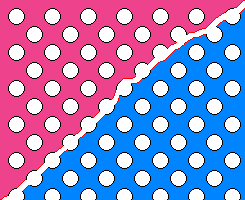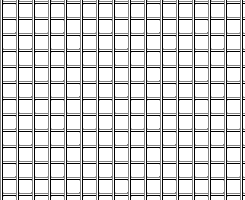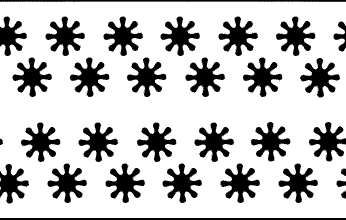Pollen Trapping
|
|
|
|---|
|
Pollen Trapping |
Pollen Stripping Screens |
|---|

 Various types of wire mesh have been used to cause
some of the pellets of pollen to become detached. The type
illustrated immediate right has every junction resistance welded at a pitch
of 5 mm, so that the mesh is rigid and each hole has it's
dimensions controlled as no movement of individual strands is possible.
Various types of wire mesh have been used to cause
some of the pellets of pollen to become detached. The type
illustrated immediate right has every junction resistance welded at a pitch
of 5 mm, so that the mesh is rigid and each hole has it's
dimensions controlled as no movement of individual strands is possible.
Woven Wire screens can be used, but they have the disadvantage that narrow strips, such as in required for vertical stripping screens. These are easily corrupted in handling with some gaps becoming too narrow and others becoming wider than required, reducing the effectiveness.
Round holes in plastic sheet are also popular as is shown in the right hand picture. Two colours are shown that are common in Europe (I guess Polish or Czech manufacture), but I have also seen grey and white, as well as aluminium versions.
 My personal favourite (and probably the most effective) is
a plastic sheet one millimetre thick that has a number of star shaped
holes punched in it. Simply due to the action of a bee climbing
through these holes means that many pellets are removed.
My personal favourite (and probably the most effective) is
a plastic sheet one millimetre thick that has a number of star shaped
holes punched in it. Simply due to the action of a bee climbing
through these holes means that many pellets are removed.
The type that I use is 55 mm wide and 342 mm long, I drill some 3 mm diameter fixing holes along each edge and then use "System Zero" Screws to attach to 6 mm (or 9 mm) plywood panels that have been cut out to take them. See "Rational" Pollen Stripping Screen.
I am regularly asked where to purchase these plastic screens. In December 2016 they are available from E.H. Thorne Ltd. There may be other suppliers too. R.P.
The star shaped stripping screen started life as a hole with four small slots around the bottom part of the circumference. (bees legs are underneath and the original usage was vertical).
The snag with this arrangement is that the punch and die suffered side thrust during the punching action, due to uneven resistance and instead of designing a 'shear proof' punch and die it was decided to make the slots radiate in all directions and thus even out the stress. Hence the star shape... Because a star is even in all directions horizontal placement of the screens became sensible.
|
Update... 29 Sept 2002. After I wrote the note above I found an old and faded black and white photograph that shows the original, German made, aluminium stripping screens... I was wrong about there being four slots, there were actually five and they were arranged as per the small diagram at right. |

|
|---|
|
The photograph itself was too poor to reproduce and so I have drawn a facsimile of it to show how it was used. The mesh that the pellets fall through should be 6 or 7 mesh, although I have had success with 8 mesh. (Which was used, simply because it was available.) |

|
|---|
Written... 31 March 2001, Revised... 05 July 2002, Update... 29 Sept 2002, Upgraded... 12 June 2006,
|